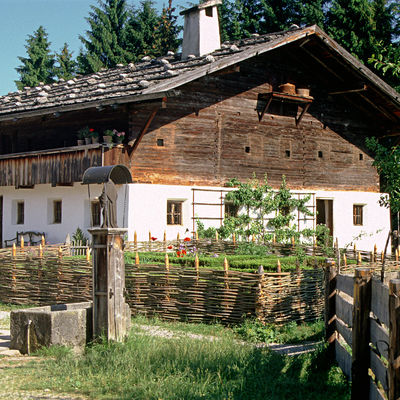62 House from a four-sided farm from Tyrlbrunn
House name "Schiebl"
District: Traunstein
Municipality: Palling
Year of Construction: 1555
Type of Building:
house
Presentation time: 19th/20th century
In Tylbrunn, this house formed part of a four-sided farm which was one of the largest and economically significant in the Region.
The ground floor, with its living quarters and horse stable, was built entirely out of stone, while wood was used to build the upper floor – log assembly for the living quarters and a boarded timber-framed construction for the working quarters. The wooden walls are decorated with unusual, opulent paintings in three of the chambers on the upper Floor.
Murals in the “Schiebl” building:
The two ground-floor chambers to the right of the stairs were probably painted by the same artist. An inscription above the door dates the painting to 1691. In one chamber there are images amongst the dense vines depicting St. Sebastian and St. George as a dragon-killer in addition to a hunting scene. This is an unusual motif for a farmhouse, as only the aristocracy were permitted to hunt at that time. Three saints who enjoyed popularity at the time are depicted on a wall in the second chamber: Ursula, Florian and Lawrence. The paintings in the third chamber are probably older, of better quality and presumably from the brush of another artist. A picture in a picture depicting a scene from the Passion of Jesus can also be made out: Christ on the Mount of Olives. Another wall shows characters in contemporary, traditional Spanish costume on horseback and in an ornate
sleigh – not common scenes from everyday farming life, either. It is remarkable that the artist placed little emphasis on perspective and composition, all the more to portray the exact details such as fashionable garments and horses’ harnesses which would have been immediately recognisable to contemporary viewers.
So as not to damage the paintings when the house was moved to the Open Air Museum, the walls were transported whole. Imperfections and sections which had already been damaged were restored at the museum.


